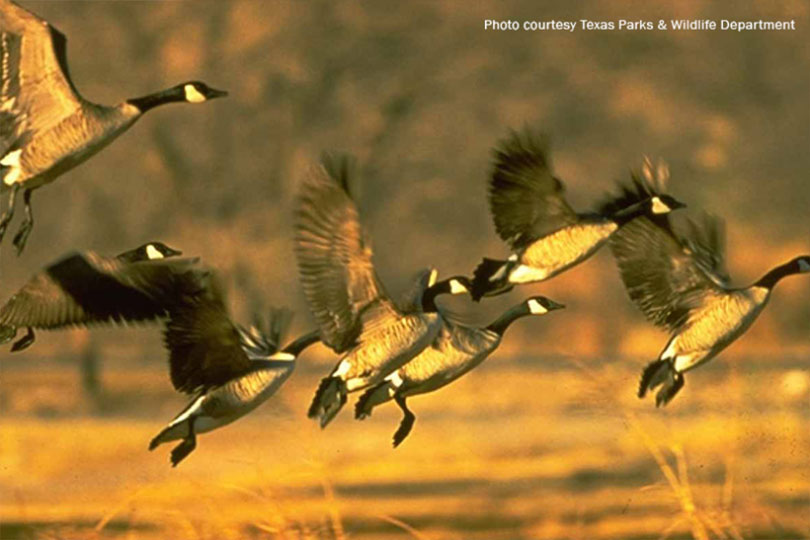By Jessica Domel
Multimedia Reporter
Drought across much of the state earlier this year could take a toll on waterfowl hunting, but there’s still reason for hope for duck and goose hunting seasons.
“The good news is, for some areas of great importance to breeding ducks, especially in the Eastern Dakotas, it got very, very wet,” Kevin Kraai, waterfowl program leader for the Texas Parks and Wildlife Department, said.
In early September, as teal season was kicking off, Kraai told the Texas Farm Bureau Radio Network that drought conditions had improved greatly in parts of Texas.
The southern region of the state, Gulf Coast and northeast Texas all received much-needed rainfall, flooding duck foods and increasing available habitat for waterfowl.
At the time, he said much of East and Central Texas still needed rainfall.
“They’re going to be looking for any fresh water they can find, and right now, the vast majority of the fresh water in Texas is associated with man-made ponds, stock ponds (and) small bodies of water,” he said.
Regular duck season on the High Plains Mallard Management Unit is Oct. 29-30 and Nov.4-Jan. 29.
The regular duck hunting season for the north zone is Nov. 12-27 and Dec. 3-Jan.29.
Duck hunting in the south zone runs Nov. 5-27 and Dec. 10-Jan. 29.
Starting this duck season, veterans and active-duty military personnel are able to hunt during the youth waterfowl hunting season Oct. 22-23 in the High Plains Mallard Management Unit, Nov.5-6 in the north zone or Oct. 29-30 in the south zone.
“This is the first year that we have been allowed to have a special veterans hunt, and we’re combining that with the youth season this year. So, if you’re a veteran or active duty military, you can hunt that weekend prior to the opener of the duck season in whichever zone you live. Obviously, it’s different in all three zones,” Kraai said.
The addition of the military hunting season was approved by the Texas Legislature during the last session.
Duck hunters should also be aware of another new change this hunting season. The bag limit now includes mergansers.
“Historically, we had a separate bag limit for mergansers. Essentially, you could shoot two hooded mergansers per day,” Kraai said. “Starting this year, there is no longer a separate merganser bag limit. Mergansers are now part of the regular duck bag, and there’s no restrictions on hooded merganser.”
The six duck bag limit can include no more than: five mallards (of which only two may be hens), three wood ducks, two redheads, two canvasback, one scaup, one pintail and one dusky duck.
Full duck hunting season regulations are available in the Outdoor Annual.
Goose hunting season also begins in November. Like ducks, geese are most likely to be found in areas with fresh water on the landscape and food.
The majority of geese that come into Texas come from the high Arctic. They usually migrate through Texas in late October and early November.
All waterfowl hunters are required to have a valid Texas hunting license, Harvest Information Program (HIP) certification, a migratory game bird stamp and a federal duck stamp.
Legal shooting hours are one half hour before sunrise to sunset.
The bag limit for geese varies by zone. Hunters should check the Outdoor Annual for this year’s regulations.

